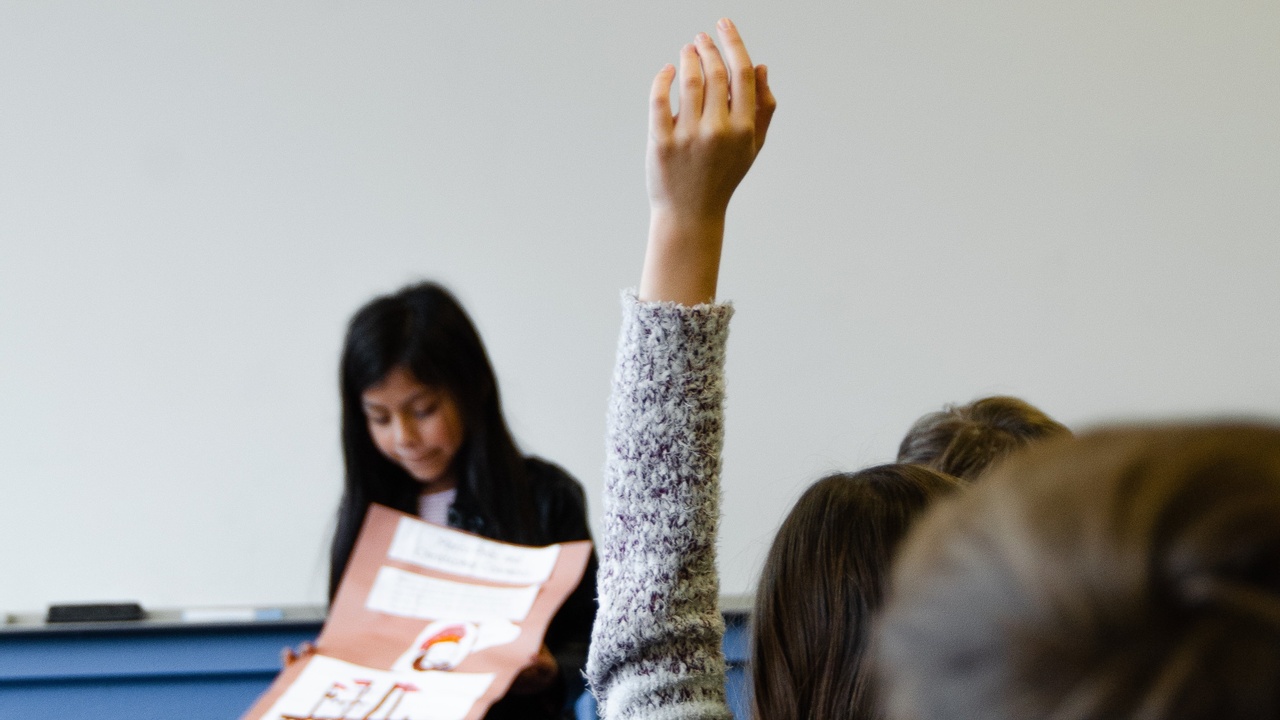Secondary Teacher's Checklist for Planning in Unprecedented Times: 12 questions to ask as you prepare for a new year

Use this teacher's checklist to make sure you (and your instructional units!) are prepared for this unprecedented school year.
This is going to sting a bit when I say it: we talk a lot in education, but rarely do we keep pace with our walk.
Classrooms are quick to claim 'student-centered', but with the mounting pressures of standardized assessment, our dreams of student-voice and choice get deferred by compliance-based systems.
Schools wear 1:1 tech capabilities like a badge of honor, but when COVID-19 struck, teachers were positively paralyzed in a digital sea of 'what to do?'.
And while plenty of campus mission statements ooze with 'college and career' -ready promises, the truth is, most students are groomed exclusively for a college-bound path, leaving practical skills and application to sit on the sidelines of our curriculum.
In short, instruction in today’s schools is far from optimized.
But there's hope yet, friends.
Many have said that 2020 would be the Year of Clarity....
Peer Editing Tips: 3 reasons peer review isn’t working (+ how to fix it)

Peer editing, like every classroom practice, must be taught. The peer editing tips in this post will help you give your students the guidance they need to take their peer editing to the next level.
To plenty of learners, the mere mention of ‘peer review’ brings on all the classic symptoms: the audible groan, the predictable eye-roll, the suddenly ‘busy’ demeanor. Anything to assume an outward distaste for a classically dreadful task.
Meanwhile, plenty of teachers feel the same way in issuing the task.
Quite frankly, students have a hard time seeing places that need improvement in their own writing at any level; so how can we expect them to spot errors in each others’ work?
Meanwhile, they tend to dash through assigned tasks as quickly as possible, in ceaseless effort to ‘get it over with’.
It’s no wonder we ask ourselves:
Is peer review even worth the effort--and the precious class time?
For generations, peer review has been perceived as the mundane tas...
Teaching ELA Remotely: 9 inspiring ideas for digital instruction

Teachers all over are trying to navigate teaching ELA remotely, and this post is full of inspiring, innovative ideas for digital instruction.
('10 Inspiring Ideas for Digital Instruction': you can watch the full Facebook Live featuring all these ideas and more by clicking HERE.)
Are you wearing your digital hard helmet (?!) because our classrooms are officially under 21st-century construction!
As overwhelming as it can be to shift toward teaching ELA remotely, we aren't going to spend this post talking about our limitations, fears, or concerns; instead, we're going to shift the emphasis on embracing and recognizing opportunities, sharing them, and making sure we all have the resources we need to implement awesome learning in our ELA classrooms.
By now, experience has likely told you that virtual learning is not like classroom learning. In other words, you can't simply 'transfer' what you're doing from physical space to digital. Rather, it's a matter of transforming t...
Getting Started with Persuasive Pitches in ELA

Not all of our students will go on to be entrepreneurs. But that doesn’t mean they shouldn’t learn to think like them...
*winks*
We live in an entrepreneurially-minded world, where skills such as problem-solving, creativity, grit, and teamwork are the backbone of innovation and progress.
In having these skills, our learners will better understand themselves and the needs of our society.
Yet one-too-many teachers (former Self, including) operate on the belief that entrepreneurial skills and cognitive learning targets can’t co-exist in the same lesson plan.
(Think Harry-Potter-and-Lord-Voldemort, here)
There just isn’t enough *time*, we tell ourselves, to dedicate toward teaching self-direction!
But if I’m speaking the God’s Honest on a Sunday: that’s a bunch of malarky. Hogwash.
Straight rubbish!
After all, what’s a good, written argument if there’s no good problem-solving behind it? What’s a good team research project without teamwork?!
...What it means to 'make' writing + 3 strategies for getting started

As a writing teacher, I'm sure your students write a lot, right? But how often do you give them time to 'make' their writing?
How often do you let them get lost in the 'parts' of writing instead of merely plugging out draft after draft?
How often do you let them create?
In this Facebook Live video, I offer some fresh perspective on teaching writing in the high school classroom, and I offer three ways to 'make' writing as a means for getting started.
Check it out, and leave a comment below!
I look forward to turning this into a blog post soon, but I want to give credit now to the 'make' expert herself, Angela Stockman, who inspired my direction with this 'vlog' post!
Now get making!

PS...Some of the book links in my posts are affiliate links, which means I can make a small commission from them. There is *zero*, additional cost to you, of course. Consider it my ‘tip jar’ for spittin’ all this free wisdom at you ;-) In all realness, just k...
6 Collaborative Brainstorming Strategies for High School Students

Coined in the 1950s and popularized by his 1960s publication, Applied Imagination, advertising executive + businessman Alex Osborn's brainstorming concept has since made its way through the boardroom and into the high school classroom as a standard means for essay preparation.
Prior to drafting the various elements of their essay, we typically encourage students to generate a few ideas and consider strategic order before committing these thoughts to the page or screen.
And we facilitate this process in any number of ways. Lots of times, our writers are asked to draft essays individually and/or on-demand, meaning a time limit is in place.
So we share idea-generating strategies in the form of steps, pneumonic associations, or triggers such as the Hand Approach method. These give writers a framework to access ideas quickly and efficiently within that limited time frame.
Asking our students to brainstorm in groups is also a timeless classic. This is where Osborn's legacy ...
Build Perspective, Deepen the Convo

How do we take our writers to the next level? Sure, we can teach them to generate and organize ideas, but how do we get them to engage with these ideas on a more critical level?
It's all about perspective, brave teachers. Getting our students to appreciate just how intricate the conversation is involves an awareness of who thinks what and why, and how these viewpoints impact the issue entire.
Here's a brief activity that reinforces the concept of perspective. By activity's end, your students will have:
- considered context
- identified line of reasoning, perspectives
- analyzed perspectives
- drawn evidence-based conclusions
- engaged in critical thinking
- engaged in public speaking
Suggested span of time? ~ 1 Week
STIMULATE INTEREST
Put students into Socratic seating and pose the following issue:
A newborn baby is suffering from a life-threatening heart defect. Doctors recommend she immediately undergo heart transplant surgery. Not only is the surgery ...
Analyzing and Evaluating Arguments

No matter what track they're on, all high school students are expected to master the art of argumentative writing before they get that coveted diploma. As English Language Arts teachers, well, teaching this skill is our specialty. But the content I'll share in this post also plays nicely with other content areas as well, so long as you're charged with teaching writing.
Soooo everybody gets a trophy! Yaaassss.
If students are going to write their own argument, they need to analyze and evaluate arguments written by others first.
By analyzing the arguments of others, our students will gain better perspective of what it means to argue logically, fairly, and credibly; they'll learn by observing both example and non-example. This has a tremendous real-world takeaway because with these skills, our learners can effectively evaluate those arguments which undoubtedly exist all around them in the modern world; and as they begin to make their own, adult decisions, our studen...
The All-Powerful Art of Summarizing

The art of summarizing is a lot harder than it sounds, but it's an essential part of the note-taking process...
Being able to effectively summarize information will help students expeditiously unpack their research to the reader.
To this end, I'd like to share a few useful activities for teaching summary-writing with your scholars.
Tweet Your Summary
One way I manage to teach the art of conciseness is through a one-sentence summary-writing activity I developed, fashioned after my love for Twitter. In 30 words or less (as opposed to 140 characters), students are asked to capture the essence of an article's main idea. It really requires them to think critically about the content and creatively about expression.
(PostScript: the "News & Trends" mini-articles at the start of Upfront magazine are a great resource for this activity.)
Catalog Your Summaries
Another one of my favorite ways to practice summary writing throughout the year is by having studen...
A 'Handy' Brainstorming Strategy for Secondary ELA Writers

If there’s one thing our writers tend to invest in the least (ahem, besides revision!), it’s brainstorming. To them, generating ideas for an essay or a project usually conjures cold memories of a threateningly blank piece of paper or a blinking cursor -- and that can be *really* intimidating.
Meanwhile the benefits of brainstorming (in the classroom and in the real world) are countless. It helps creators:
- Gain a sense of vision surrounding a task
- Organize thoughts into more manageable and meaningful chunks
- Move forward in a designated direction and stay on track
- Iterate on/elevate ideas further; innovate
Yet our learners largely lack an idea generation system that’s structured enough to actually support them and 'speak back' inspiration…that is, until now.
- Whether you’re a teacher who’s brainstorming plans for this year’s curriculum, or you’re co-creating classroom content with your learners;
- Whether your students are writing an essay or generating ideas for an upcomi...



